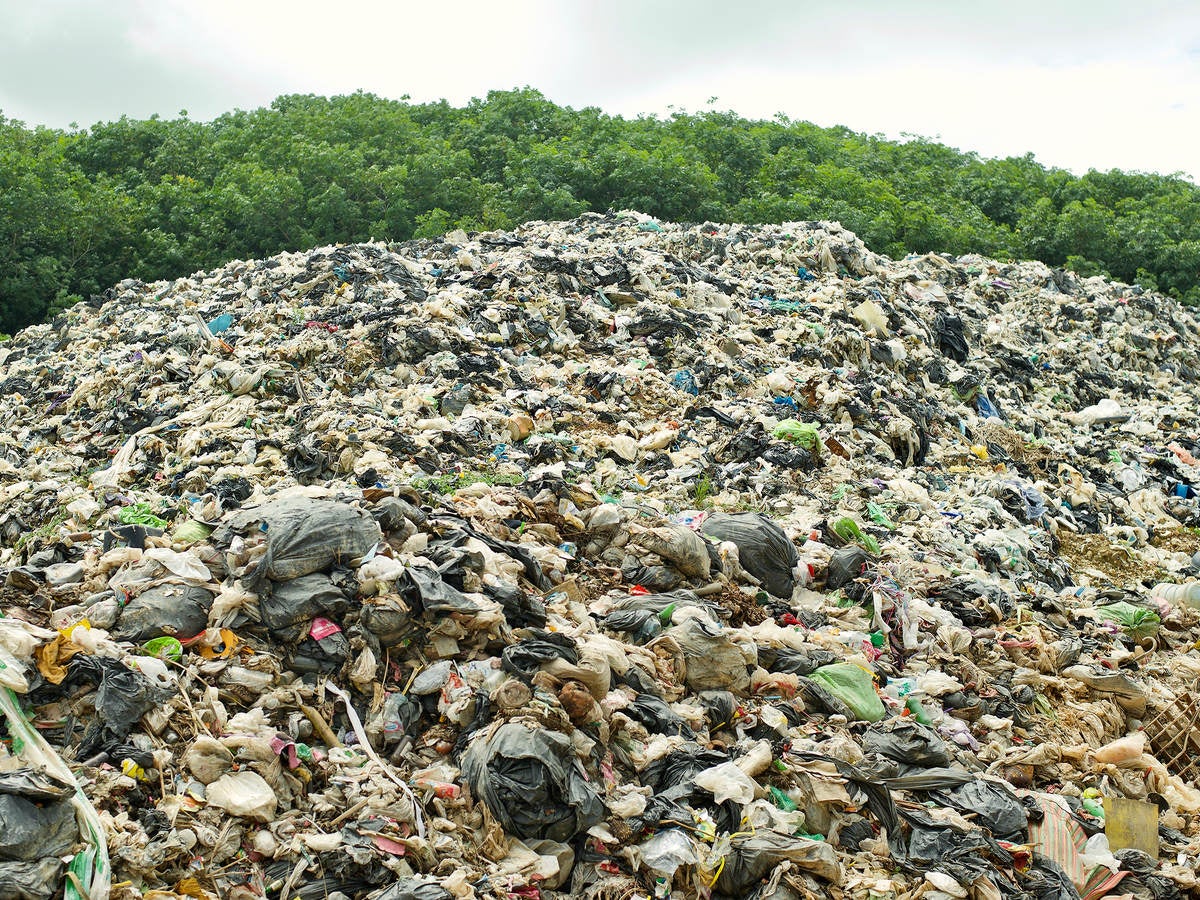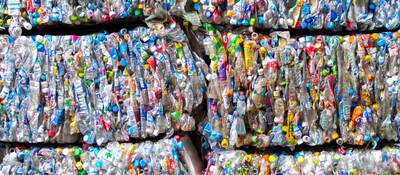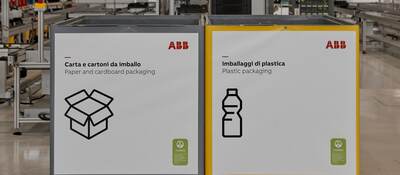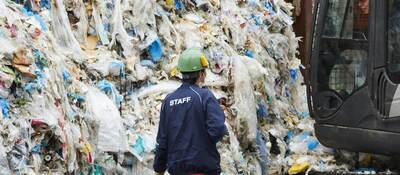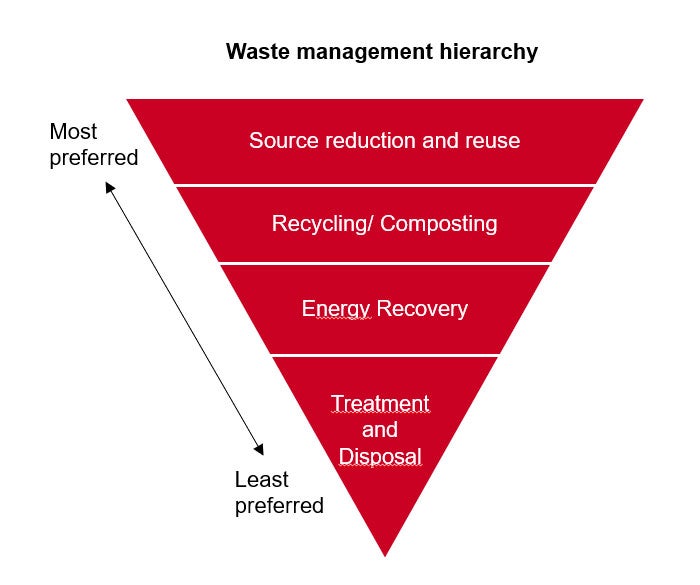
ZWTL is achievable. Why should you care? In 2020, the global direct cost of waste management was an estimated USD 252 billion. When factoring in the hidden costs of pollution, poor health and climate change from poor waste disposal practices, the cost rises to USD 361 billion. Without urgent action on waste management, by 2050 this global annual cost could almost double to a staggering USD 640.3 billion1.
What is ZWTL? Simply put, the term is defined as no non-hazardous waste produced by an organization reaches a landfill. All solid waste from a facility is reused, recycled or discarded through other means of disposal. The benefits of instituting such a program are numerous, including:
- Recognition as a responsible corporate citizen.
- Reduced costs associated with waste disposal.
- Reduced reliance on limited landfill space.
- Reduced scope 3 greenhouse gas emissions.
Methodologies
Waste is entirely a human invention; it does not occur in nature. When a tree dies and falls in the forest, its remains continue to be part of the ecosystem and returns nutrients back into the soil through biodegradation. As the awareness and importance of diverting waste from landfills grow, millions of individuals and organizations are transitioning away from a “take-make-waste” linear economy mindset in favor of a “refuse, reduce, reuse, recycle” circular framework. Waste generation and waste mitigation have become key topics to address in the shift to a circular economy.
But vague definitions, unverified claims and undefined procedures can make it difficult to qualify and quantify efforts toward adopting the circular economy model. And yet, several verifiable methodologies exist that organizations can adopt to move them to a ZWTL model.
More diversion is better.

Waste management can be thought of as a hierarchy of options. Options for waste can be sorted from most to least preferred, and programs can be designed to optimize your waste management alternatives.
Reduce
Using less seems like an easy option, but when you extend it to every aspect of your facility, it can be a bigger initiative. Think about the items you stock in your employee cafeteria, the office supplies you use around the workspace, as well as the materials used in your manufacturing processes. Also, consider modernizing and streamlining your supply chain to consolidate shipments. Extending this idea further, reexamine the volume of the packaging in which you release your products to the consumer. Across all end-use segments, 60% to 70% of consumers said they would pay more for sustainable packaging. A willingness to pay more was relatively equally distributed across end-use segments.
Reuse
Finding new uses for consumed materials, recycling and composting are all methods of reuse you can implement to reduce the amount you send to landfills. If a material has reached the end of its useful life and is not able to be sold again within your operations, you can look at other ways of reusing that material or continuing its lifecycle. This includes liquidating products for materials to allow other potential users to be able to use them. For example, foods that are no longer acceptable for human consumption can be sent to local farms to be used as livestock feed. Other items that have been used by your organization can be sent to charity organizations and thrift stores to be used by other people outside of your facility. Also, cardboard boxes can be used many times after their initial use, delaying their entry into the waste stream and withholding their carbon from release as long as possible. Additionally, companies can stop using cardboard and single-use boxes and other items — like cafeteria trays and utensils — and replace them with durable goods that last, delaying their entry into the waste stream.
Recycle
Depending on your geographic location, different materials are available for recycling, with the most common materials being glass, plastic and metal. Organization-wide recycling efforts require a certain amount of infrastructure, such as recycling bins in the office/facility, but the outcomes are well worth it.
Waste-to-energy (WtE)
To take recycling a step further, a waste-to-energy (WtE) process sends your waste materials to an incineration facility that captures the energy produced from the incineration process to be used into the local energy grid. This has multiple benefits since it both reduces the amount of waste as well as limits the need for burning other sources like coal or gas. Organic waste, such as cooking oils, can also be used as biofuel to further reduce the reliance on energy from utility suppliers. This waste can also be composted and anaerobically digested to produce arable soil.
Responsibly dispose
Of course, not every material can be recycled or reused, or even responsibly incinerated if it is hazardous. Make sure that the location you are sending your irredeemable discarded materials can handle it responsibly and in accordance with the laws of your geography. And remember, just because a material is “hazardous” does not mean it cannot be recycled or reused and it must go to a landfill. You might have to apply different declarations on the material, but with a little commitment and research, you might find an organization that can use your hazardous materials in their manufacturing processes.
Finally, if all avenues of reuse and recycle have been exhausted, make sure you sort your waste so that no recycled material is mixed into it and then locate a facility that can safely dispose of it.
How to verify your waste management
The UL Solutions Waste Diversion validation program focuses on monitoring and measuring material flows that are not part of an organization’s final product.
UL 2799, the Standard for Environmental Claim Validation Procedure (ECVP) for Zero Waste Classification, requires at least 90% diversion through methods other than waste-to-energy to achieve a Zero Waste to Landfill (ZWTL) designation. The criteria for our Silver, Gold and Platinum designations are:
- Platinum — the highest designation, attained when a facility consistently achieves a landfill waste diversion rate of 100%
- Gold — this designation is reserved for facilities that have achieved a landfill diversion rate of 95%-99%
- Silver — this designation is achieved if a facility achieves a landfill diversion rate of 90%-94%
Get connected with our sales team
Thanks for your interest in our products and services. Let's collect some information so we can connect you with the right person.




